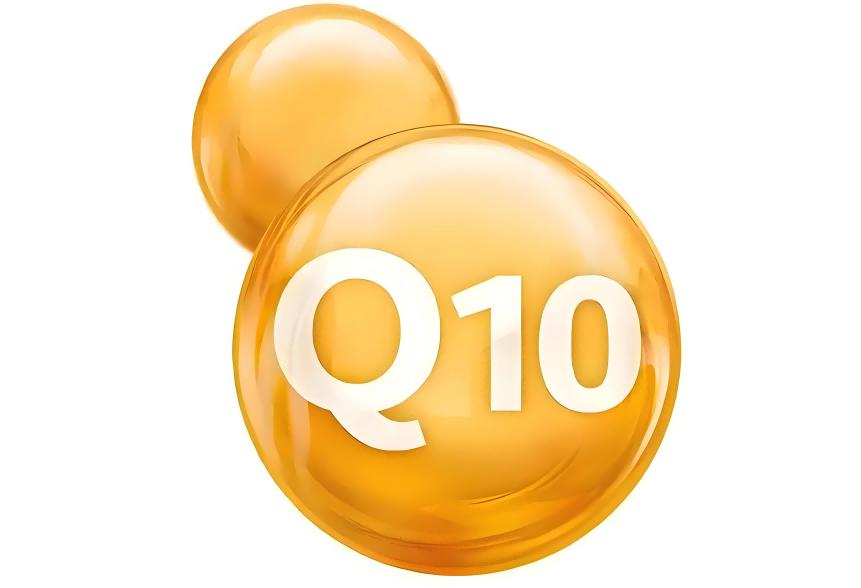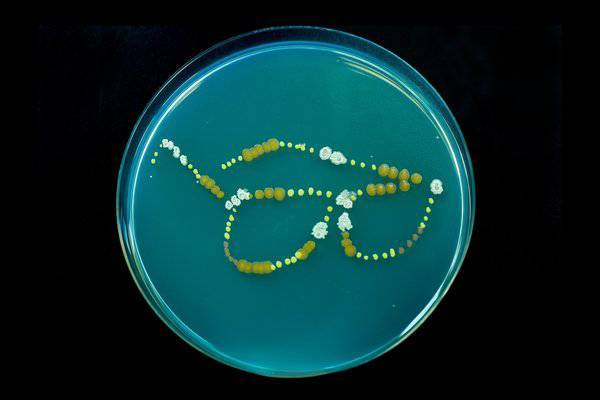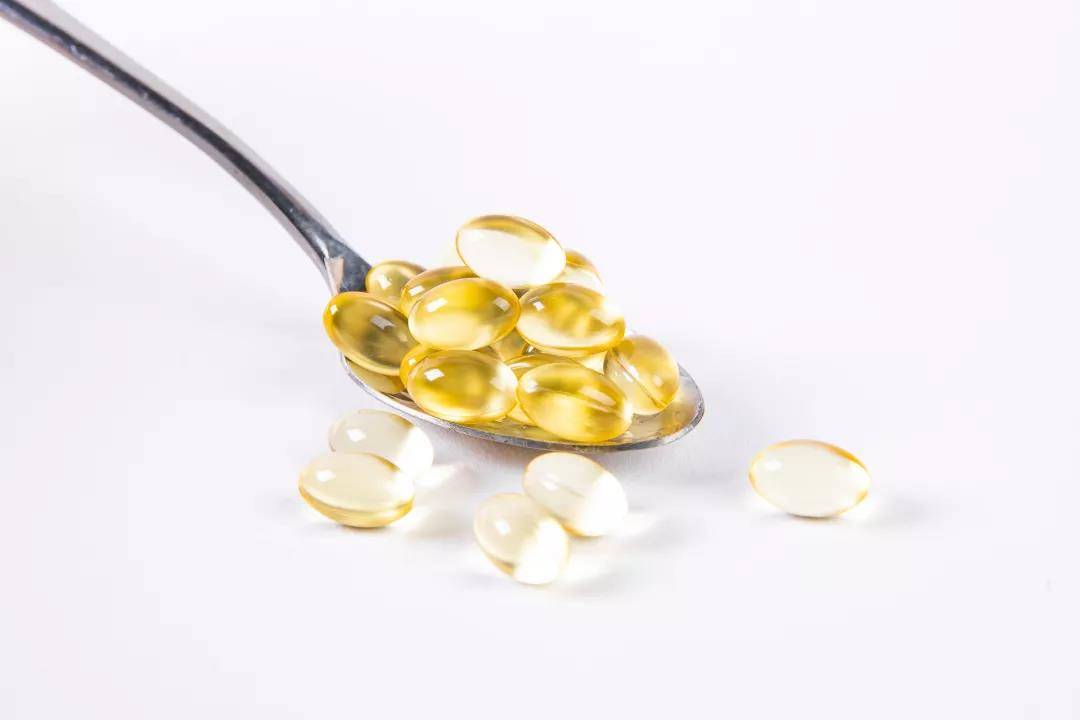Q10 What Does It Do?
Introduction to Coenzyme Q10
Coenzyme Q10 was first isolated from bovine myocardial mitochondrial lipids in 1957, and its chemical structure was determined and fully synthesized by Dr. Karuforukas in the United States in 1958, when he suggested that coenzyme Q10 plays an important role in cardiac function [1,2]. Over the years, as scientists have continued their research, the importance of coenzyme Q10 has been increasingly recognized, leading to a wide range of applications, including clinical therapeutic areas, food and cosmetics.
Coenzyme Q10 Physical and Chemical Properties
Coenzyme Q[3] is a fat-soluble quinone compound widely found in living organisms. The number of isoprene units in the side chain of coenzyme Q varies among different sources, and in humans and mammals it is 10 isoprene units, so it is known as coenzyme Q10 (see Fig. 1.1 for its structure): Coenzyme Q10 is also known as decaenoquinone, ubiquinone, ubiquinolone, and coenzyme Q10, and is systematically named as 2-(3,7,11,15,19,23,27,31,35,39-decamethyl-2,6,10,14,18,22,26,30-decamethyl-2,6,10,14,18,22,26,35,39-decanal). (3,7,11,15,19,23,27,31,35,39- decamethyl-2,6,10,14,18,22,26,30,34,38-tetradecadecenyl)-5,6-dimethoxy-3-methyl-p-benzoquinone, with molecular formula C59H90O4 [4], molecular weight 863.36, CAS No. 303-98-0. Coenzyme Q10 is a yellow or light yellow crystalline powder, melting point 49 oC, soluble in chloroform, benzene, carbon tetrachloride, soluble in acetone, ether, slightly soluble in ethanol, insoluble in water, methanol.
Coenzyme Q10 is an endogenous substance that exists in two states, oxidized coenzyme Q10 and reduced coenzyme Q10, and it exists in three states in the body, which are interconverted as shown in Figure 1-2:
Mechanism of Action of Coenzyme Q10 in Vivo
Coenzyme Q10 (CoQ10) is a fat-soluble quinone compound widely found in living organisms. CoQ10 is mainly found in the inner membrane of mitochondria, and is a component of the respiratory chain and a cofactor for three mitochondrial enzymes (polymerase complexes I, II, and III) that are important in oxidative phosphorylation [6]. During aerobic respiration, a large amount of energetic ATP is produced, accompanied by a partial production of H2O, which is necessary for the production of H2 O. Coenzymes are important hydrogen transporters in this process [7].

Pharmacological Activity of Coenzyme Q10
Coenzyme Q10 is a naturally occurring lipophilic coenzyme in the body that prevents the production of free radicals and oxidative modification of proteins, lipids and DNA [8]. The antioxidant effect of coenzyme Q10 is manifested by its ability to trap peroxyl radicals and alkoxyl radicals, which is an important component of its antioxidant defense mechanism against oxidative stress [9,10]. The total antioxidant effect of coenzyme Q10 lies in the direct antioxidant action of coenzyme Q10 when it is reoxidized from ubiquitin to ubiquitone. In this case, electron transfer to molecular oxygen is prevented in time by the formation of superoxide, a reactive form of oxygen[11] .
The Pharmacological Activities of Coenzyme Q10 As Below:
(1) Prevention and Treatment of Cardiovascular Diseases
Studies have proven that coenzyme Q10 can treat a variety of cardiovascular diseases, such as heart failure, hypertension, coronary angina, and so on. Clinical studies have found that patients with congestive heart failure have lower levels of coenzyme Ql0 in their cardiomyocytes than normal people, and the more severe the heart failure, the lower the levels of coenzyme Ql0 in their cardiomyocytes. After daily oral coenzyme Ql0 treatment in heart failure patients, more than half of the patients showed significant improvement in clinical symptoms such as dyspnea and fatigue, and the patients in the oral coenzyme Ql0 group showed significant increase in stroke volume and left ventricular ejection fraction; the statistical results show that the therapeutic effect of heart failure is proportional to the amount of exogenous coenzyme Ql0 supplementation and the degree of heart failure, and the effect of coenzyme Ql0 supplementation in patients with heart failure of unknown causes or idiopathic dilated cardiomyopathy is proportional to the amount of exogenous coenzyme Ql0 supplementation and the degree of heart failure. The efficacy and safety of coenzyme Ql0 in both idiopathic dilated cardiomyopathy and unexplained heart failure are significant [12].
Coenzyme Q10 protects and reduces the damage of vascular endothelial cells by reducing superoxide in endothelial cells and vascular smooth muscle cells, and promotes the release of active substances from vascular endothelial cells that can maintain vascular tone, dilate peripheral vasculature, and reduce peripheral resistance, which can alleviate the symptoms of hypertension [13]. Coenzyme Q10 is used in the treatment of angina pectoris in coronary heart disease, the theory is based on the fact that ischemic cardiomyocytes have a reduced content of coenzyme Ql0, and supplementation of exogenous coenzyme Ql0 can increase the content of ATP in cardiomyocytes, and maintain the integrity of the calcium channel, so that coenzyme Q10 has a good effect on the damage to cardiomyocytes caused by free radicals generated by ischemia of myocardium in coronary heart disease [14,15].
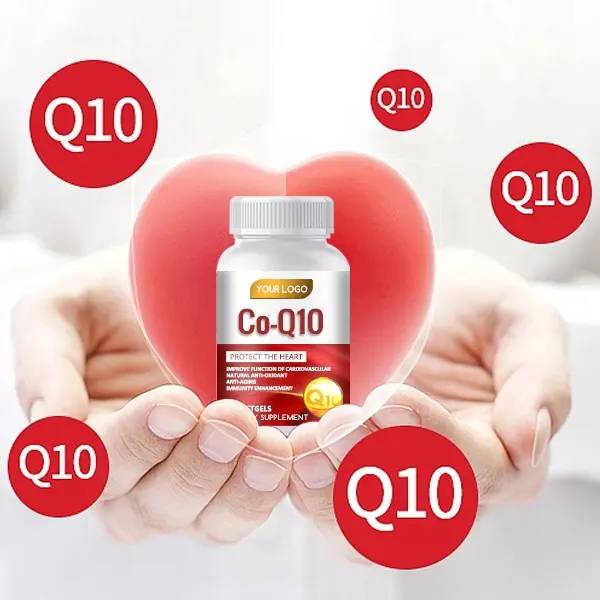
(2) Prevention of Nerve Damage and Nerve Repair Effects
Coenzyme Q10 crosses the blood-brain barrier, stabilizes cell membranes, maintains the integrity of calcium channels to reduce cellular damage, and reduces mitochondrial damage caused by dopamine, thus playing a neuroprotective role [16,17]. Studies have shown that coenzyme Q10 can be used to treat neurological diseases such as Parkinson's disease. Parkinson's disease is a degenerative neurological disease that increases with age [18, 19]. Coenzyme Q10 has been found to improve mitochondrial dysfunction in patients with Parkinson's disease, thereby slowing down the progression of Parkinson's disease and reducing its symptoms.20 Yaroslau Compta et al. [20] found that multiple system atropy (MSA) was associated with reduced levels of coenzyme Q10, and that plasma and serum levels of coenzyme Q10 in patients with MSA were lower compared to those in controls. Plasma and serum levels of coenzyme Q10 were reduced in patients with MSA compared to controls. Hamidreza Komaki et al.[21] found that coenzyme Q10 had a protective effect against neurological damage caused by hippocampal long-term potentiation LTP in rats with a β-induced Alzheimer's disease.
(3) Enhancement of Immunity, Anti-Fatigue, Delayed Aging
Coenzyme Q10 is one of the most important lipophilic antioxidants. It prevents the production of free radicals and oxidative modification of proteins, lipids and DNA [22]. A large number of clinical studies have confirmed that coenzyme Q10 has the function of improving human immunity and delaying aging. Studies have shown that the decline of human immunity is the result of free radical reactions, and the strong antioxidant capacity of coenzyme Q10 can inhibit the modification of receptors on immune cells by free radicals, thus enhancing immunity and slowing down aging [23]. Kei Mizuno et al. [24] found that subjective fatigue as measured by visual analog scale was reduced in the coenzyme Q10 administration group, which indicated that the subjective fatigue of coenzyme Q10 administration group was reduced by visual analog scale. In a double-blind experiment, Kei Mizuno et al.[24] found that subjective fatigue, as measured by a visual analog scale, was reduced in the coenzyme Q10 administration group, suggesting that coenzyme Q10 can improve subjective fatigue and physical activity during fatigue-induced loading tests, and prevent adverse effects caused by physical fatigue.
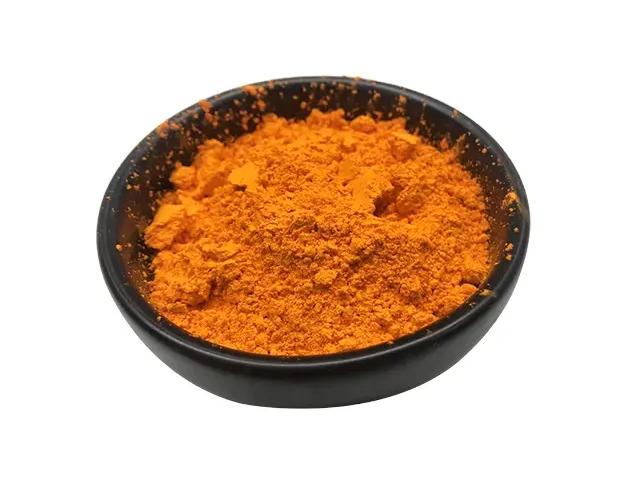
(4) Whitening and Blemish-Removing Effects
Coenzyme Q10 has the pharmacological activity of whitening and lightening. Paul et al [25] found that when the effective concentration of coenzyme Ql0 was 0.0l-1%, it could promote skin metabolism, respiratory chain transmission and ATP production in epithelial cells of the face and hands, and inhibit lipid peroxidation of the skin, and play the role of nourishment and activation of the skin, and the team of the skin is not irritating and toxic. Rusciani et al. [26] and Inui et al. [27] found that coenzyme Q10 could prevent the damage of UV rays to the stratum corneum of the skin and promote the proliferation of epidermal cells. It was found that the occurrence of skin photoaging was associated with a decrease in the content of the endogenous antioxidant coenzyme Q10, which significantly inhibited the expression of collagen kinase in human skin fibroblasts, thereby reducing the degradation of collagen in the skin, and preventing the multiple damages induced by photoaging. Studies have shown that coenzyme Q10 is more effective than vitamin E and vitamin B in nourishing and revitalizing the skin [28].
References:
[1] Frederick. Crane, Yarhree. Hatefi, Riae. Lester, et al. Isolation of a quinone from beefheart mitochondria[J]. Biochimica BiopHysica Acta, 1957, 25(1): 220-221.
[2] Wolaniuk, Folker. Research on coenzyme Q10 in clinical medicine and in immunomodulation[J]. Drug Under Experimental And Clinical Research, 1985, 11: 539-545.
[3] Bhagavan. Plasma coenzyme Q10 response to oral ingestion of coenzyme Q10 formulations[J]. Mitochondrion, 2007, 7: 78-85.
[4] Adarsh. Kumar, Harharpreet. Kaur, P. Devi. Role of coenzyme Q10 (CoQ10) in cardiac disease, hypertension and Meniere-like syndrome[J]. PHarmacology Therapeutics, 2009, 124: 259-269.
[5] Lenaz. Coenzyme Q10 biochemistry, bioenergetics and clinical application of ubiquinone [M].New York: A Wiley Interscience Publication, 1984: 33- 47 .
[6] ZHANG J-Z, CHI Li-Li, SHEN Y-Ling. Production of coenzyme Q10 and its application in medicine[J]. Journal of Shanghai Institute of Applied Technology, 2004, 4(4): 301-304.
[7] Manuela R, Martinefski, Maria F, Yamasato, et al. Coenzyme Q10 deficiency inpatients with hereditary hemochromatosis[J]. Clinics and Research in Hepatology and Gastroenterology, 2021,45:6.
[8] Yaroslau Compta, Darly M. Giraldo, Esteban Muñoz. Cerebrospinal fluid levels of coenzyme Q10 are reduced in multiple system atropHy, [J]. Parkinsonism & Related Disorders, 2018, 46: 16-23.
[9] Daniela Casagrande, H. Júnior, Paulo. Mechanisms of action and effects of the administration of Coenzyme Q10 on metabolic syndrome[J]. Journal of Nutrition & Intermediary Metabolism, 2018, 13: 26-32.
[10] Juan.Garrido-Maraver, Mario.D.Cordero, Manuel Oropesa-Ávila, et al. Coenzyme Q10 therapy[J]. Molecular Syndromology, 2014, 5: 187-193.
[11] Amr A. Fouad, Abdulruhman S. Al-Mulhim. Therapeutic effect of coenzyme Q10 against experimentally-induced hepatocellular carcinoma in rats [J]. Environmental Toxicology and PHarmacology, 2013, 35(1): 100-108.
[12] Luca Tianol, Romualdo Belardinelli, Paola Carnevali. Effect of coenzyme Q10 administration on endothelial function and extracellular superoxide dismutase in patients with ischaemic heart disease: a double-blind, randomized controlled study[J]. European Heart Journal, 2007, 28: 2249-2255.
[13] Yamagami, Sehlieker, Engel. Reduction by coenzymeQ10 of hypertensio induced by deoxycorticosterone and saline in rats [J]. Int J Vitam Nutr Rcs, 1974, 4: 487-490.
[14] Alp, ,Channon K. Regulation of endothelial nitric oxide synthase by tetrahy-drobiopterin in vascular disease[J]. Arteriosclerosis Thrombosis Vascular Biology, 2004, 24: 413-421.
[15] Daniela Casagrande, Paulo H, Waibb. Mechanisms of action and effects of the administration of Coenzyme Q10 on metabolic syndrome[J]. Journal of Nutrition & Intermediary Metabolism, 2018, 13: 26-32.
[16] LaurieK. Mischley, Jason. Allen, Ryan. Bradley. Coenzyme Q10 Deficiency in Patients with Parkinson's Disease[J]. Journal of the Neurological Science, 2012, 318: 72-79 .
[17] Liu Jia, Wang Luning, Zhang Siyan, et a1. Coenzyme Q10 for Parkinson s disease[J]. John Wiley&Sons, 2009, 12: 45-50.
[18] Clifford W Shults, Oakes David, Karl Kieburtz , et a1. Effects of coenzyme Q10 in early Parkinson disease: evidence of slowing of the functional decline[J] . Archives of Neurology, 2002, 59(10): 1541-1550.
[19] Chew, Watts. Coenzyme Q10 and diabetic endotheliopathy : oxidative stress and the 'recoupling hypothesis' Q[J]. Journal Medicine, 2004, 97: 537-548.
[20] Yaroslau Compta, Darly M. Giraldo, et al. Cerebrospinal fluid levels of coenzyme Q10 are reduced in multiple system atropHy[J]. Parkinsonism & Related Disorders, 2018, 46: 16-23.
[21] Hamidreza Komaki, Nafiseh Faraji, Alireza Komaki, et al. Investigation of protective effects of coenzyme Q10 on impaired synaptic plasticity in a malerat model of Alzheimer's disease[J]. Brain Research Bulletin, 2019, 147: 14-21.
[22] ManuelaR.Martinefski. Coenzyme Q10 deficiency in patients with hereditary hemochromatosis[J]. Clinics and Research in Hepatology and Gastroenterology, 2021, 45: 6.
[23] Xu Caiju, Meng Jia, Fu Jianyun. Role of coenzymes in immunomodulation[J]. Chinese Journal of Health Inspection, 2007, 17(2): 222-224.
[24] Kei Mizuno, Masaaki Tanaka. Antifatigue effects of coenzyme Q10 during pHysical fatigue[J].
[25] Steele Paul, Tang Peter, DeGrauw Antonius, eta1. Clinical laboratory monitoring of coenzyme Q10 use in neurologic and muscular disease[J]. Am JClin Pathol, 2004, 121(1): S113-S120.
[26] Rusciani, Proietti. Low plasma coenzyme Q10 levels as an independent prognostic factor for melanoma progression[J]. Journal of the American Academy of Dermatology, 2006, 54(2): 234-241 .
[27] Inui, Ooe, KFujii. Mechanisms of inhibitory effects of CoQl0 on UVB-induced wrinkle formation in vitro and in vivo[J]. BioFactors, 2008, 32: 237-243.
[28] Valerian. Kagan, Elena. Serbinova, Lester. Packer. Antioxidant effects of ubiquinones in microssomes and mitochondria are mediated by tocopHerol recycling[J]. Biochemical BiopHysical Research Communications, 1990, 169(3): 851-857.


 English
English French
French Spanish
Spanish Russian
Russian Korean
Korean Japanese
Japanese